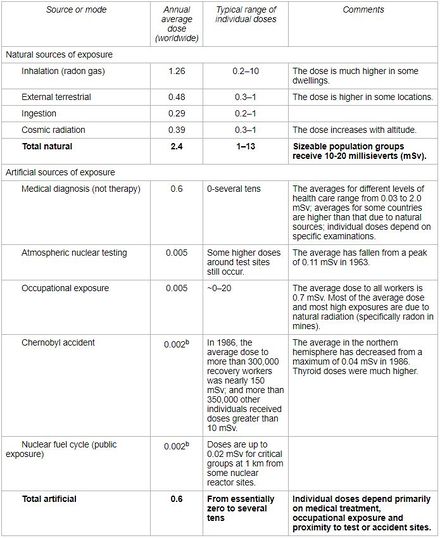Everyone, everywhere, is exposed to radiation all the time. It is a natural part of the environment in which we live.
People are also exposed to man-made radiation, predominantly in medicine, but also from other sources. For some, radiation exposure is part of their work.
| Terrestial radiation comes from the Earth: everything is naturally radioactive, including rock, soil, water, air, animals, plants, and food. The average dose from terrestial radiation is 2 mSv per year. More than half of this is from radon in your home.
Cosmic radiation comes from the Sun and outer space. The average dose from cosmic radiation is 0.4 mSv per year. Medical procedures make up most of the man-made dose, by far. The average dose from medical diagnosis is 0.6 mSv per year. Some people are also exposed to radiation as part of their work, from industrial uses like nuclear power plants, from accidents, and even from leftovers of atmospheric nuclear testing. On average, the dose from this is very small, about 0.01 mSv per year. These numbers are worldwide averages. Some people are exposed to less radiation, and some more. The table to the right includes typical ranges of annual dosess. |
Table 1. Annual average doses and ranges of individual doses of ionizing radiation by source (Millisieverts a )
 a Unit of measurement of effective dose.
|
 |
 |